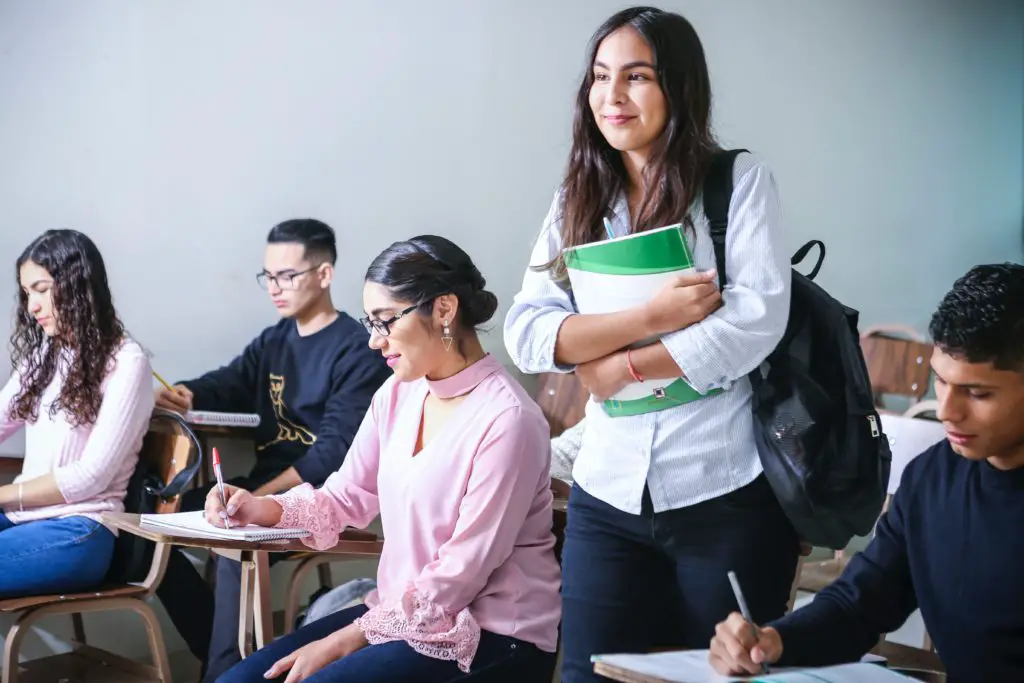To know how do teach advanced students…read on this article..!
The road in molding minds that are as different as a signature pattern of a snowflake can be treacherous. In the pursuit of imparting knowledge, it is essential to not only identify but adapt to certain types of students and their needs to provide a safe and nurturing environment. One such ‘type’ of the student is the ‘advanced’ students, and to whom (just as any student) requires the proper teach tools and methods to provide a platform for them to flourish academically.
In order to positively impact a gifted child academically, the first step requires an assessment of the student. This means assessing both areas of strength and weakness, respectively, in order to create an environment that challenges both areas of development for the student.

Steps to teach advanced students
Steps to successfully educate an advanced student
Step 1. Stimulate the students’ creative interests by resonating with their personal interests.
Step 2. Challenge your advanced students academically (as well as socially)
Step 3. Provide the student with academically challenging projects
Step 4. Set individual goals that push boundaries
Making the extra effort to resonate with personal interests
Students’ lives are a complicated mesh of newly experienced hormones and youthful exuberance. Therefore expecting the same result when seeking to impart knowledge to the same effect proves redundant. This is due to the fact that one cannot expect a developing mind to react in a repetitive manner to new information or repetitive information.
But the key to successfully educating an advanced student is taking the extra effort to observe and identify an advanced student’s areas of key interest. This goes a long way in bridging the gap in stimulating retained interest in education.
Advanced students typically possess a common shared trait in their passion for creative avenues of intellectual self-expression. Creating a learning plan that brings students’ creative talents to the fore while simultaneously involving social interaction among peers allows the collective to learn from multiple facets.
Challenging advanced students socially and academically
Creating a balanced teaching plan that incorporates ways to introduce different social situations to students who are at different stages in their respective educational journeys is essential. By knowing your students, you are more capable of creating a teaching plan that caters to their strengths and weaknesses.
Including opportunities for the students to socially interact with multiple students with whom they may not usually interact gives the advanced student/s the opportunity to learn key social interaction tools. Coupled with an increase in social interaction, there is an increase in participation, and doing so pushes the boundaries of the student.
Providing the student with academically challenging projects
Advanced students crave challenges in order to sustain their creative output. By providing students with an opportunity to visually present their creative ideas and share them with their peers, you provide a platform to express their individual talents. Creating projects, whether group or individual, that require the student to research a particular topic that not only interests them but the class as a collective creates cohesion and enjoyment while learning.
The project can include visual aids that are created by the students by hand, a PowerPoint presentation, or a written presentation that they verbally have to present. Breaking the barrier of outward expression will allow the advanced student to overcome any barrier they may have speaking in front of a group of people and increase their confidence levels.
Setting individual goals that push boundaries
Most advanced students crave competition. They garner a great sense of self-accomplishment when they are able to push themselves academically and achieve their goals. By also acknowledging them for their efforts, the advanced student feels recognized and will push them to achieve future goals set forth. The goals should play to their strengths and improve upon their weaknesses.
These goals should be tangible, and including the advanced student in the planning stage of setting these goals, it provides the lecturer with further insights in an interpersonal way. The student gains further insight into their weak areas that need improvement and places the onus upon them to improve that area in order to achieve their goals. Advanced students require constant challenge as they are susceptible to bouts of boredom when they are not stimulated intellectually.
Conclusion
Molding the minds of advanced students need not be viewed as a daunting task. Although they excel in specific areas, they often lack in others. Teaching an advanced student requires patience and introspective understanding through trying different methods in order to find the right balance. This should also provide the lecturer with an opportunity to expand on what they already know and expound on it.
Frequently asked questions
- How is teaching a talented youngster advanced subjects different from teaching an older student?
The most important factor in teaching the subject is the emotional maturity of your subject and the level of education they have.
- How can I teach advanced students easily and effectively?
Challenging your students academically as well as socially, and including them in the creation of the learning process.
- How do you, as a teacher, teach students who learn differently from the rest of the class?
Learn about your students, try to establish a social community, vary the methods of teaching curriculum, use creative methods of teaching which will help advanced students
- How should a student teach other students?
Introduce the Top-down and bottom Up teaching approach
a) Top-down: a large view of a subject; this allows the students a view of the bigger picture and what knowledge they will gain.
b) bottom Up A breakdown of the intricacies; this is a break up of the individual segments of the project as a whole and what parts of the project they are particularly to concentrate on.
